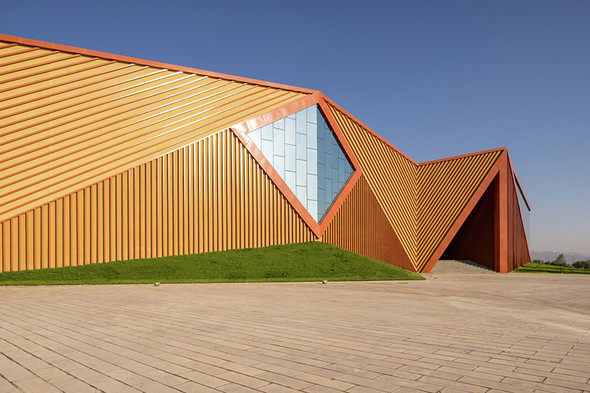The new Great Wall Winery in NingXia province, where viticulture plays a big role in the local economy and culture, so much that is often called the Chinese Bordeaux. The design concept began from the landscape: the plot area is surrounded by vineyards on East side and by Helan mountains on West side, that separated NingXia province from the Gobi desert.
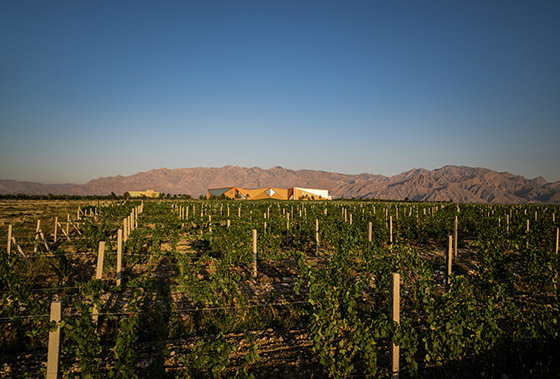
The result is a broken outline facade that perfectly lays on the beautiful lunar landscape. The facade is composed by a wall with a colored concrete plaster finishing and decorated with rectangular section metal profiles, placed in parallel lines inspired by the vineyards shape. Three big glass openings permit to natural light to come in and also give a permeability feeling and a strong visual connection with the landscape, that is possible also from the roof where from a sightseeing terrace is possible a 360degrees observation of the entire area, including vineyards, Helan Mountains and Ning Xia Imperial Tombs.
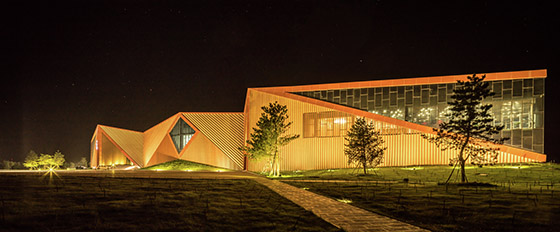
Yunmo Winery is also a energy and costs saving building, thanks to a "buffer space" between the outer facade and the inner one. In fact the distance between the two facade layers increase from the ends to the center in order to have the best protection for the daily usage areas, but save energy in the fast transit spaces like lobbies and corridors.

Despite to the irregular facade, the interiors layout is rational and designed for the best flows organization possible, in order to properly connect this mixed functional program (lobby, shops, restaurant, office, exhibition space, main cellar, private cellars and tasting rooms).
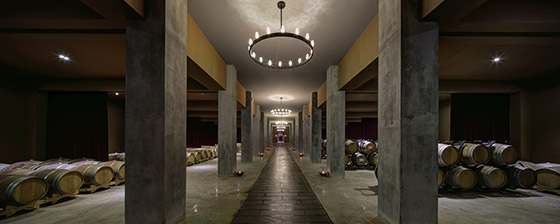
The design of the lobby was driven by two main aims: the first was to show from the entrance a corporate identity related to the wine architecture function, the second one was not to lose the connection with the landscape and natural elements. So the main actor of the lobby is a big scale wood installation inspired by the barrel shape. It is a skylight that brings natural light from the roof to the pool at the ground floor, that is a skylight too and gives a special light effect to the cellar at the B1.
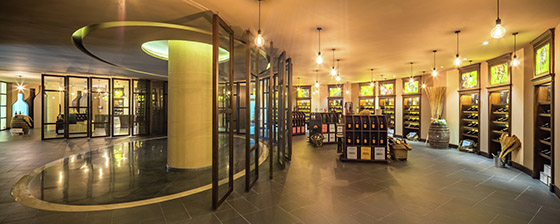
The Restaurant is totally absorbed by the landscape: in fact the big glass openings bring the visitors straight to the vineyards, also thanks to mirrored clad columns. They work both like a sight multiplier, and also, thanks to the reflection effect, as a landscape decomposition tools. The result is a dynamic space where, sitting at any restaurant table, the visitor can enjoy all the spots possible, even the ones out from his eyes trajectory.
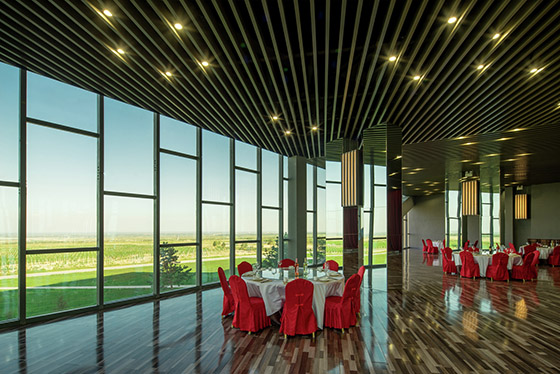
The Cellar is a "mysterious" space, like the basement of an old manor. In the cellar lobby the natural light filter filters through the pool at the ground floor, producing a surreal light effect. The barrel are placed all around the room, like a roman circus, with the light at the center of the stage. The cellar storage is designed like a modern industrial cathedral, with a high central nave to walk observing the barrel, with a site specific light design. The different proportion of the spaces (the B1 lobby has a circular plan, while the cellar is a long rectangle) and their play of different heights gives a mystique feeling of the wine aging process. Metal, cement, red curtains, dark brown paint, will be very helpful to achieve the desired atmosphere.
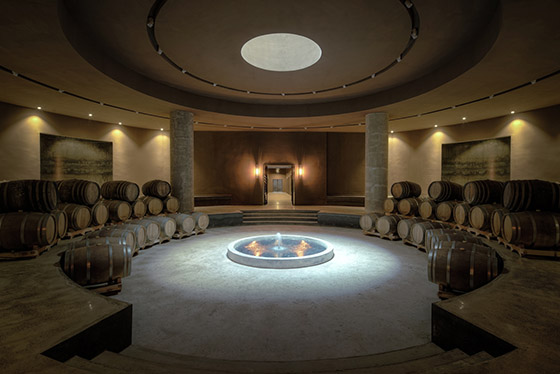
Photos by Nathaniel McMahon
Architects: a+a architecture studio
Via ArchDaily



